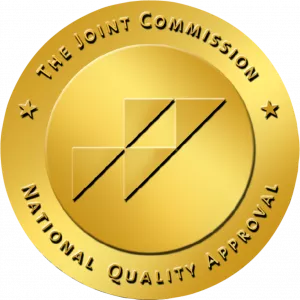12 Step programs work by offering a set of 12 spiritual principles to support addicts in their recovery journeys. With an estimated 3 million attendees worldwide, 12 step programs provide group meetings in which members offer support, guidance and experience. Starting with Alcoholics Anonymous (AA) these support groups date back to the 1930’s [1], originating in Akron, Ohio.
While Alcoholics Anonymous (AA) is faith-based, the 12 steps principles are spiritual-based. Members believe in a higher power, but the identity of a higher power can remain ambiguous. It could be a spiritual being or a specific god. What matters most is the support in the group, not whom the members believe in.
Unlike Alcoholics Anonymous, many 12 step programs cater to both alcoholics and drug addicts. Anyone who struggles with a substance abuse disorder is free to join. These support groups are focused on cleansing the body, spirit and mind and often share a whole host of resources to help addicts get sober. They deal with all types of alcohol and drug abuse.
Do 12 Step Programs Work? History Says Yes.

12 step programs are all based on the well known Alcoholics Anonymous, first founded by Bill Wilson. He recognized that alcoholics needed a treatment program that could help prevent relapses. The treatment program would offer them the resources and support they needed to get clean and stay sober.
Bill Wilson developed AA because he was an alcoholic himself. He struggled with alcoholism for years before finally overcoming his addiction. Several key players were put into his life and he felt the need to pass on the knowledge he gained. He recognized the power of group support, and along with co-founder Dr. Bob, a new fellowship was born. The fundamental beliefs of this program were written in a book known as the ‘Big Book for Alcoholics Anonymous.’ These fundamental beliefs are the foundation of the 12 step program. 12 step programs share similar beliefs to Alcoholics Anonymous, Cocaine Anonymous, Narcotics Anonymous and more.
What Are the 12 Steps and What Do They Mean?
12 step programs follow twelve very simple rules and steps. Members attempt to follow all twelve steps for a successful recovery. In most cases, members learn how to live the steps. They move onto the next step once they have understood and experienced practicing the spiritual principle behind the step before.
The twelve steps of the program include:
- Having to admit that you are powerless over drugs or alcohol
- Believing in a power greater than yourself to help you recover
- Making a decision to let a power greater than yourself run your life
- Exploring your own flaws and conducting a moral inventory in a fearless manner
- Admitting to not only yourself, but to others, the exact nature of your wrongdoings
- Preparing yourself for a higher power to rid you of your flaws
- Asking a greater power to get rid of all your flaws
- Making a list of all the people that you’ve harmed and be open to making amends with them
- Directly making amends with those who were impacted with your addiction to alcohol and drugs
- Continuing to take note of your own wrongdoings in an attempt to improve
- Learning how to become more self-aware through prayer and meditation
- Giving back by helping others with their recovery and practicing spiritual principles in your life
The twelve steps of the 12 step program can be difficult to follow. They are spiritual mile-markers that can help many drug addicts stay on the road to recovery. The goal of any 12 step program is to learn how to believe in yourself, and in a higher power. The twelve steps help many drug and alcohol abusers repair and rebuild their relationships with family members and friends.
The Higher Power In The 12 Step Programs
12 step programs use the term ‘higher power’ because it cannot be easily defined. Members can interpret the concept any way that they wish. Regardless of one’s religious identity, it’s possible to join a 12 step program. Most groups won’t care about one’s religion. However, there are some groups that are geared towards certain religions. These groups may also incorporate prayers or readings into their meetings. If that’s something you’re comfortable with, the routines may help you maintain discipline and abstain from drugs or alcohol.
Atheists can also take part in the 12 step program. Instead of envisioning the higher power as a god, it can be the power of the group. The higher power can also be the impersonal force of nature. The only rule is that the higher power must be greater than oneself.
The Benefits Of 12 Step Program

What are the benefits of there being a higher power in 12 step programs? The answer lies in the fact that life often becomes easier when people believe in a power greater than themselves.
Some of the benefits of believing in a higher power include:
- Feeling stronger and more capable
- Feeling comforted by the feeling that there’s someone looking out for you
- Being able to forgive others more easily
- Being able to hand over the substance abuse addiction to a higher power when things become too challenging to handle yourself
- Having faith that if you do the right thing then good things will happen to you
- Learning humility and becoming self-aware of your attitude
- A new sense of purpose in life
- More stable mental health
These reasons are likely why many addiction recovery treatment programs are backed up by religious or spiritual beliefs. It’s also why the 12 step programs rely heavily on there being a ‘higher power’. For those who aren’t sure how their faith can be incorporated into addiction treatment, attending a 12 step meeting can help. These meetings often explore the relationships between faith and addiction and many leave feeling stronger in their faith
Are 12 Step Programs Effective?
Although the 12 step program effectiveness is not verified, evidence [2] shows that many who go through the program successfully remain abstinent. Those who invest themselves in the principles and work towards a goal of abstinence often find tremendous success through the 12 steps. For this reason, many addiction specialists will strongly recommend trying these programs.
However, even if 12 step programs aid many addicts in their recovery, there are different options and possibilities that work better for other people.
You may be interested in also looking into other forms of help, such as:
- Inpatient rehabilitation
- PHP rehabilitation
- Outpatient rehabilitation
- Other group programs like AA
- Government-based programs
- Different therapy modalities
What Happens During A 12 Step Meeting?
A 12 step recovery program is essentially a group meeting. Members meet once a week or more to discuss their status or concerns with addiction. The meetings are open to everyone and anyone. Members can talk to anyone that they’d like. When they speak, they address everyone.
In most cases, there will be a speaker who hosts the meetings. The speaker will be in charge of making sure that the meeting occurs in an appropriate fashion. Some of these treatment programs offer food and beverages. They have a very welcoming and homely vibe to them.
Types of Meetings Involved With The 12 Step Approach
Not all meetings are the same. Different 12 step approaches are taken to reach sobriety. Some of the most basic meeting types that are involved with 12 step programs include:
- Speaker meetings. These meetings will have a primary speaker who is responsible for sharing their experiences. Speaker meetings are also a great place for members to share their experience with drug or alcohol abuse.
- Step meetings. These meetings discuss the details of each step. They also deal with the tricks and tips involved with each step of the addiction treatment programs.
- Discussion meetings. These meetings often focus on subjects that are unrelated to alcohol or drug use.
If you’re helping a loved one deal with their drug use, in addition to encouraging them to attend 12 step recovery program meetings, look for meetings which welcome and cater for family members and friends of the drug addict.
Aside from open-to-all meetings, there are also closed meetings. These meetings are often reserved for certain groups of people, or those who are already signed up as members. They help create a safe environment where members can discuss their private matters. For best results, try to join the same meeting at the same time of day. This helps you build rapport among the other members and the meetings will feel a lot more personal. One can attend as many meetings as they want to, be it once a month or every day. All meetings are free of charge and with an open door policy.

Could a 12 Step Program Work for You?
If you’re battling an addiction, we strongly recommend you consider attending a 12 step program. You could feel hugely supported by meeting other people in recovery in the same position as yourself. Making friends with recovering addicts can also gain you helpful tips and tricks for your own journey towards abstinence.
A quick Google search can find a meeting that’s hosted in a convenient location close to you . These meetings are extremely open-minded, and the groups welcome anyone to join. Don’t be shy. The more you open up to the group the more support you’ll be able to find.
If you’re struggling with an addiction, Avenues Recovery can guide you in finding a recovery program that will work best for you. Contact us 24/7 to speak to an advisor or motivational coach. You deserve better than a life of addiction, and we want to help you get there.
Sources
[1] www.aa.org


